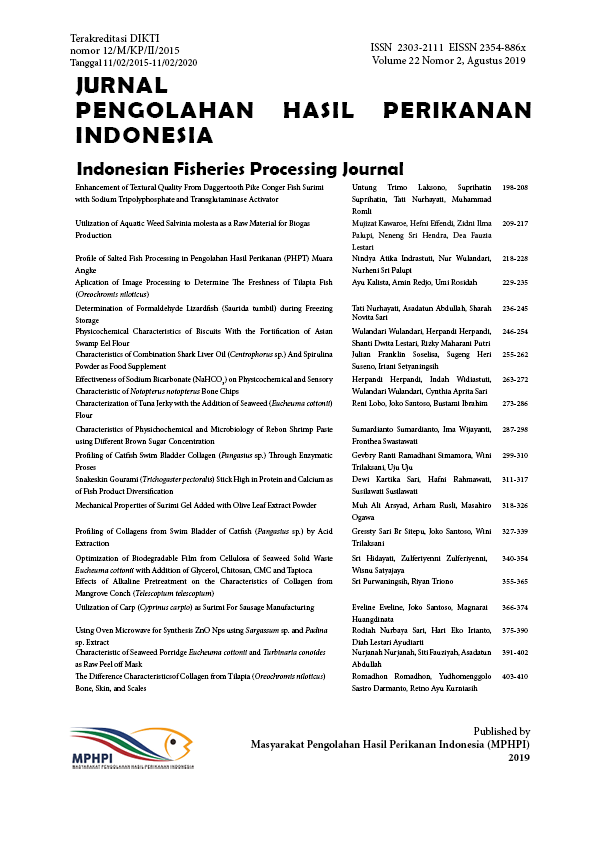The Difference Characteristicsof Collagen from Tilapia (Oreochromis niloticus) Bone, Skin, and Scales
Abstract
Tilapia (Oreochromis niloticus) is one of the main commodities of freshwater fish in Indonesia. Mostly, tilapia is exported in the form of fillets which produce residual processing including bobe, skin, and scales which can reach 50 to 70% of the total weight of fish. The aimed of this study was to extract and characterize collagen from bone, skin, and scales of tilapia. The research method used a Completely Randomized Design (CRD) by treating the different types of collagen raw materials, namely bone, skin, and scales of tilapia. The results showed that the type of raw material affected the yield, water content, color, and pH (p<0.05). The collagen yield in this study was 0.53% (bone), 0.63% (scales) and 0.94% (skin). The small amount of amendment was caused by the concentration of acetic acid being too low. the smallest water content in tilapia fish collagen 2.17%; the best brightness of collagen in fish bones 76.91%; the value of the largest degree of white on fish scales 75.95%; pH content close to neutral fish collagen scales 6.49; Morphological results of collagen produced using SEM, the presence of pores seen in the collagen of tilapia fish due to the space between the collagen fibers while. Collagen from the skin and scales has the same morphology, which is shaped in small squares and smooth surface without pores
Authors

This work is licensed under a Creative Commons Attribution 4.0 International License.
Authors who publish with this journal agree to the following terms:
- Authors retain copyright and grant the journal right of first publication with the work simultaneously licensed under a Creative Commons Attribution License that allows others to share the work with an acknowledgement of the work's authorship and initial publication in this journal.
- Authors are able to enter into separate, additional contractual arrangements for the non-exclusive distribution of the journal's published version of the work (e.g., post it to an institutional repository or publish it in a book), with an acknowledgement of its initial publication in this journal.





